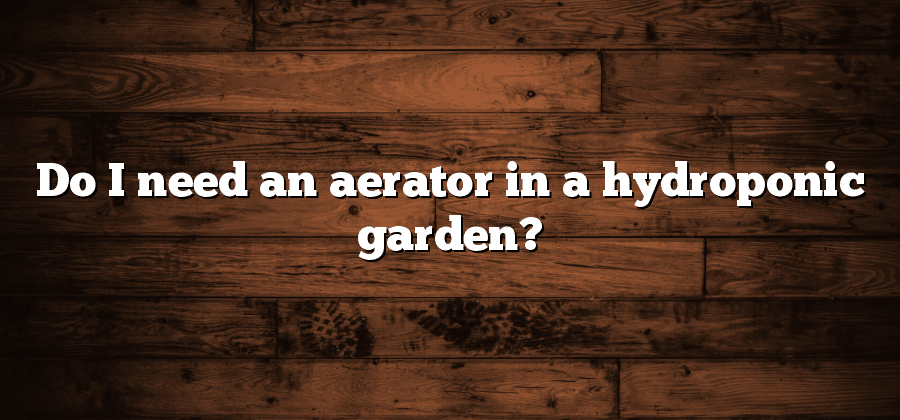Importance of Oxygenation in Hydroponic Gardens
One crucial factor in the success of hydroponic gardens is the proper oxygenation of the nutrient solution. Oxygen is vital for the health and growth of plants, as it plays a fundamental role in various physiological processes. In a hydroponic system, where plants grow without soil, the availability of oxygen in the nutrient solution becomes even more crucial.
In traditional soil gardening, oxygen naturally flows through the spaces between soil particles, allowing the roots to breathe. However, in hydroponic setups, where plants rely on a nutrient solution for their growth, oxygen must be artificially provided. Without sufficient oxygen, the roots can become oxygen-deprived, leading to poor nutrient uptake, root rot, and ultimately, stunted plant growth. Thus, ensuring proper oxygenation is not only beneficial but essential for the overall health and productivity of hydroponic gardens.
Understanding the Role of Aeration in Hydroponics
Hydroponics, the practice of growing plants without soil, has gained popularity in recent years due to its numerous advantages. However, achieving optimal plant growth and nutrient uptake in hydroponic systems requires careful attention to the role of aeration. Aeration refers to the process of providing a continuous supply of oxygen to the root zone of the plants, and its significance cannot be overstated.
Oxygen plays a crucial role in the growth and development of plants as it is essential for various metabolic processes. In traditional soil-based gardening, oxygen is naturally present in the soil, allowing plants to access it easily. In hydroponics, however, the absence of soil poses a challenge as plants rely on systems to deliver oxygen directly to their roots. This is where aeration comes into play. By ensuring an adequate supply of oxygen in hydroponic setups, plants are able to thrive and achieve their maximum potential.
Factors Affecting Oxygen Levels in Hydroponic Systems
One of the key factors that can affect oxygen levels in hydroponic systems is water temperature. When the water temperature gets too high, it can lead to a decrease in the dissolved oxygen content. This is because warmer water is less capable of holding oxygen compared to cooler water. Therefore, maintaining an optimal water temperature is crucial for ensuring adequate oxygenation in hydroponic gardens.
Another factor that can impact oxygen levels in hydroponic systems is the presence of organic matter. Organic matter, such as decaying plant material or excessive nutrients, can lead to the accumulation of harmful bacteria and algae. These organisms consume oxygen, resulting in lower oxygen levels for the plants. Therefore, it is essential to regularly clean and maintain hydroponic systems to prevent the build-up of organic matter and ensure sufficient oxygenation for the plants.
Stay tuned for the next sections as we further explore the impact of aeration on plant growth and nutrient uptake in hydroponic systems, followed by an overview of different methods of aeration that can be used in hydroponic setups.
The Impact of Aeration on Plant Growth and Nutrient Uptake
Hydroponic gardening has gained significant popularity in recent years due to its efficiency and ability to produce high yields in limited spaces. One crucial factor that plays a vital role in the success of hydroponic systems is aeration. Aeration refers to the process of introducing oxygen into the nutrient solution, ensuring that the roots of the plants receive adequate oxygen for optimal growth and nutrient uptake.
The impact of aeration on plant growth and nutrient uptake cannot be overstated. When the roots of plants are exposed to sufficient oxygen, they are able to absorb essential nutrients more effectively, leading to healthier and more vigorous growth. Adequate oxygen levels in the nutrient solution also promote the growth of beneficial bacteria, which helps in the breakdown of organic matter and prevents the growth of harmful pathogens. Additionally, improved oxygenation enhances the efficiency of nutrient uptake by the roots, resulting in increased nutrient absorption and utilization by the plants. Overall, proper aeration in hydroponic systems is crucial for maximizing plant growth and achieving optimum yields.
Different Methods of Aeration in Hydroponic Setups
Hydroponic setups require effective aeration to ensure optimal plant growth and nutrient uptake. There are various methods that can be used to introduce oxygen into the hydroponic system, each with its own benefits and considerations.
One commonly used method is the use of air pumps and air stones. Air pumps push air through air stones which then release small bubbles into the nutrient solution. These bubbles help to increase the dissolved oxygen levels in the solution, promoting healthy root growth and efficient nutrient absorption. Air pumps and air stones are relatively simple and inexpensive aeration options that can be easily implemented in hydroponic setups.






